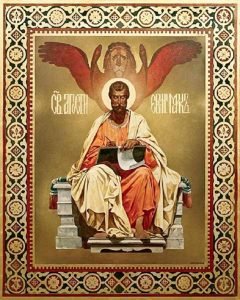 I have been sharing information about the Gospel of Mark in order to provide my readers with an understanding of the four Gospels in general. Too frequently people expect the Gospels to be pure history, only presenting the events in the life of Jesus as they actually happened. It should be remembered that before the Gospels were actually written down, they were stories about Jesus that were shared by small groups of Christians during their Eucharistic meal. Then these stories were gathered and written down in order to be documents of faith that might lead others to truly believe that Jesus came to teach humans how to live. In fact, the early Christians referred to these teachings as THE WAY.
I have been sharing information about the Gospel of Mark in order to provide my readers with an understanding of the four Gospels in general. Too frequently people expect the Gospels to be pure history, only presenting the events in the life of Jesus as they actually happened. It should be remembered that before the Gospels were actually written down, they were stories about Jesus that were shared by small groups of Christians during their Eucharistic meal. Then these stories were gathered and written down in order to be documents of faith that might lead others to truly believe that Jesus came to teach humans how to live. In fact, the early Christians referred to these teachings as THE WAY.
Given Mark’s careful choice of words and also patterns, it is surely no accident that he places the scene of Jesus’ transfiguration exactly in the middle of his Gospel (9:2). The transfiguration of Jesus is Mark’s way of imaging his resurrection. On one side of this scene, Mark shows the ecstatic response of those who see the paralytic rise up from his mat and those who witness a little girl rise up from her deathbed. On the other side, he shows the ecstatic response of the women who have come to realize that Jesus himself has been “raised up.” The scene of Jesus’ transfiguration overshadows both parts of the Gospel, emphasizing god’s creative, transforming, transfiguring power to restore life.
Mark’s Gospel is sometimes called “the Gospel of the Cross,” so it is worth noting that the Lord’s Transfiguration overshadows the cross. Mark arranges events so that the scene of transfiguration follows right after Jesus speaks to his disciples about taking up the cross, and it completes his meaning. Jesus says: “Whoever wishes to come after me must deny himself, take up his cross, and follow me. For whoever wishes to save his life will lose it, but whoever loses his life for my sake and that of the gospel will save it.” Mark does not show Jesus elevating the cross for its own sake, but rather embracing it as a means to Transfiguration. In Mark, the whole teaching of Jesus is:
death-and-resurrection,
cross-and-Transfiguration.
Mark’s Gospel is truly rich in Scripture, theological in purpose, and brilliant in design and invites its readers to become followers of Jesus’ transfiguring wisdom. In practical terms, Mark clearly understands that Jesus taught His followers how to live and think. When you think of the challenges of life as an opportunity to spiritually grow, then life changes – you become transformed. The way that Jesus thought about life, how He thought about others and how He treated them, when embraced, is transformative.
Mark’s Gospel became a model for the two other Synoptic Gospels (i.e., Matthew and Luke). They are documents that are meant to also present Jesus’ transfiguring wisdom – a wisdom that expresses clearly the meaning and purpose of life.
